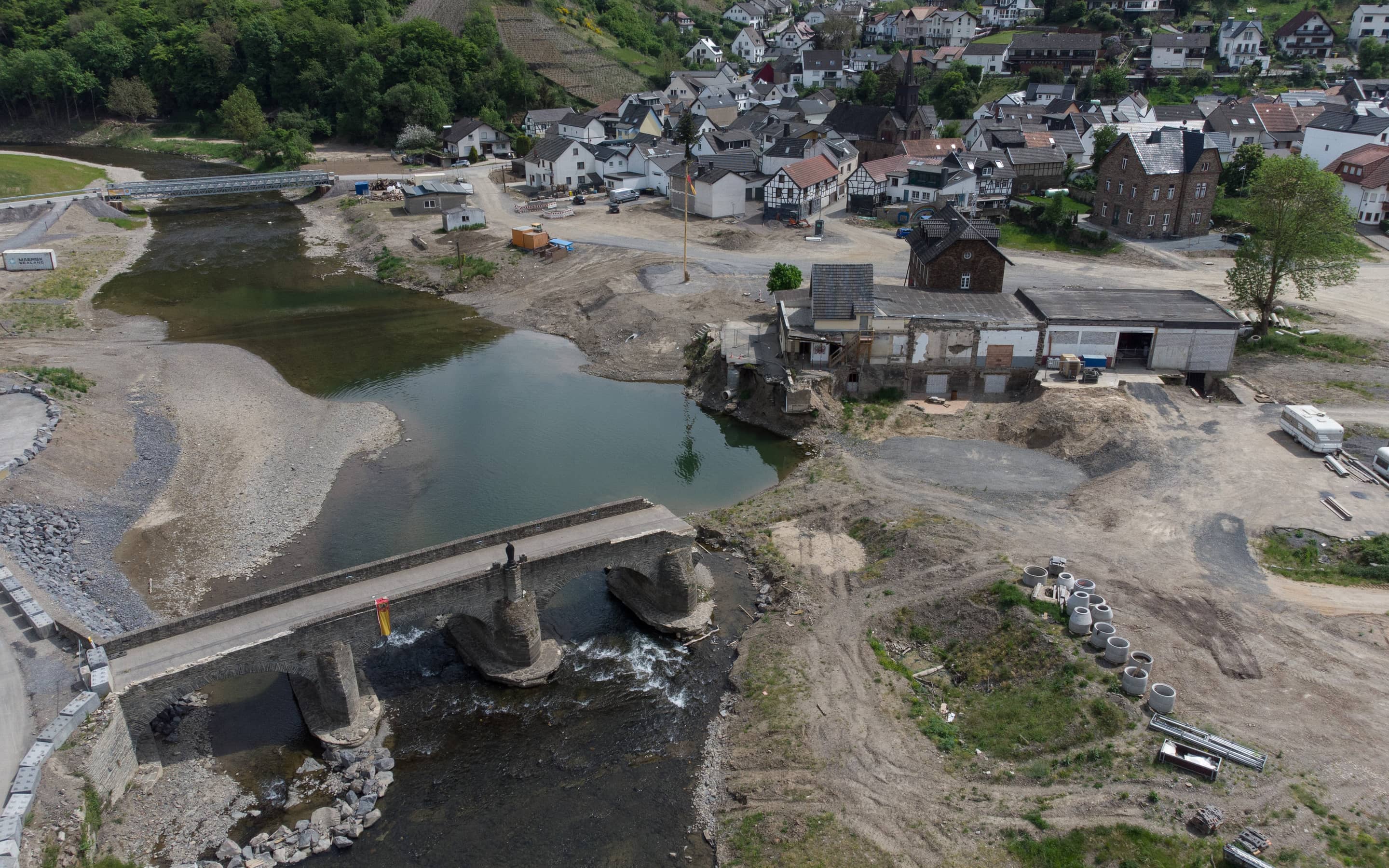

In Mayschoß, Sabine Mies stands on the ground where her husband's parents' house once stood and where excavators are now cutting grooves in the earth. On the night of the flood, almost exactly two years ago, the Ahr came over the road, it was only a few meters up to them. First the water entered the shed, swept up the machinery of their winery, tore away the shed, the garage and the house. The water destroyed one and a half hectares of vineyards.
Sabine Mies is 58 years old, a woman whose clothes are flapping. She says she has lost 14 kilograms since the flood and is still talking to a therapist about that night.
And yet, almost two years later, she is standing on a building site in Mayschoß. She and her husband are building on the plot of land where his parents' house stood, they are building where the water has taken everything from them. The house is finished, it's even plastered, and they want to move in at the end of the year.
But why? Why on this site of all places?

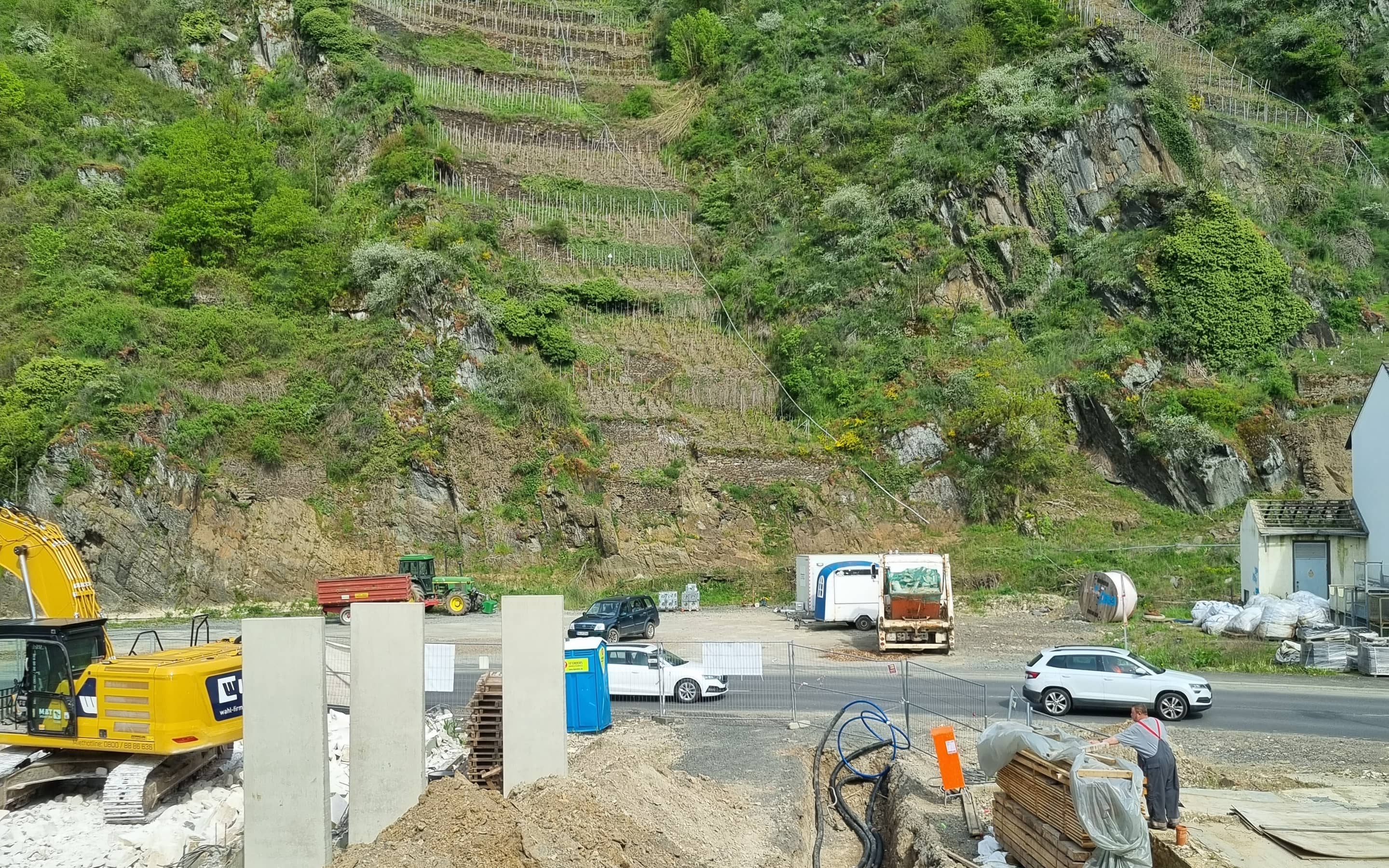
When the state of Rhineland-Palatinate presented the flood maps a few months after the flood, a strip was designated where no more building was allowed, the so-called provisional special hazard area. Sabine Mies and her husband looked at the map, she says, and decided to build right next to the strip. Because yes, the night from July 14 to 15, 2021 was bad. But Mayschoß is their home. The Ahr is her little river.
At the construction site, Sabine Mies says: "We're not afraid that such a flood will come again."
But the Ahr flooded in 2016, the flood disaster came in 2021 and all forecasts predict that extreme weather events will become more frequent in the future. And climate change is likely to make heavy rainfall events in the region even more dangerous. This is shown by recently published simulations by a team from the Karlsruhe Institute of Technology (KIT).
The 2021 flood remains an exceptional event by all standards. However, there was already a flood in 1804 in which similar discharge rates were achieved. If weather conditions similar to those in July 2021 were to develop in a world that has warmed by two degrees, the KIT researchers calculate that 18 percent more precipitation would be expected in the region around the Ahr valley. Because the valley is so steep, the peak of the flood would then be 39 percent higher.
Sabine Mies says: "I'm not afraid," a short pause, "I haven't had any feelings at all since last night." Then she cries. Her husband comes from behind: "If I'm worried, it's not about the rain, it's about my wife."
Besides, the couple say, they have adhered to the country's guidelines. There are only garages on the first floor, which they can protect with sheet piling. They have installed a heat pump and a photovoltaic system on the roof. They believe they have done everything that climate protection requires of them, and it seems as if they expect this to protect them too.
After the flood disaster in July 2021, experts quickly agreed that the dense population in the Ahr valley played a part in the flood being so devastating. 180 people lost their lives in Germany two years ago, 134 of them in the Ahr Valley. The disaster caused 33 billion euros in damage in Germany.
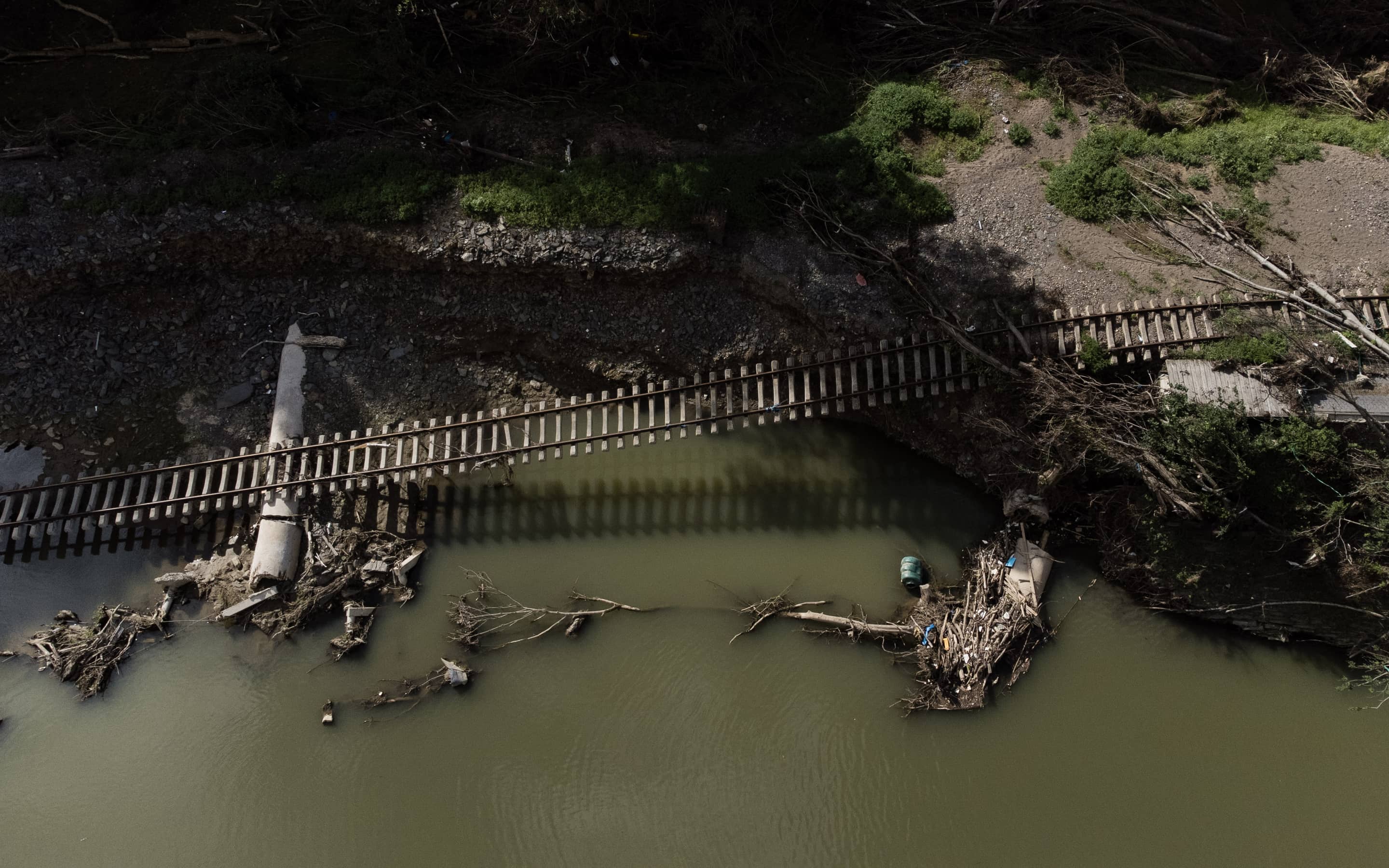
In order to prevent such destruction in the future, the river needed more space, flood protection had to be rethought and people had to move back from the banks. "The building area must be adapted to the risk, otherwise homeowners and entrepreneurs run the risk of losing everything again at the next flood," demanded Friedrich Merz, now CDU chairman.
However, satellite images of villages in the valley cast doubt on whether this has been achieved.
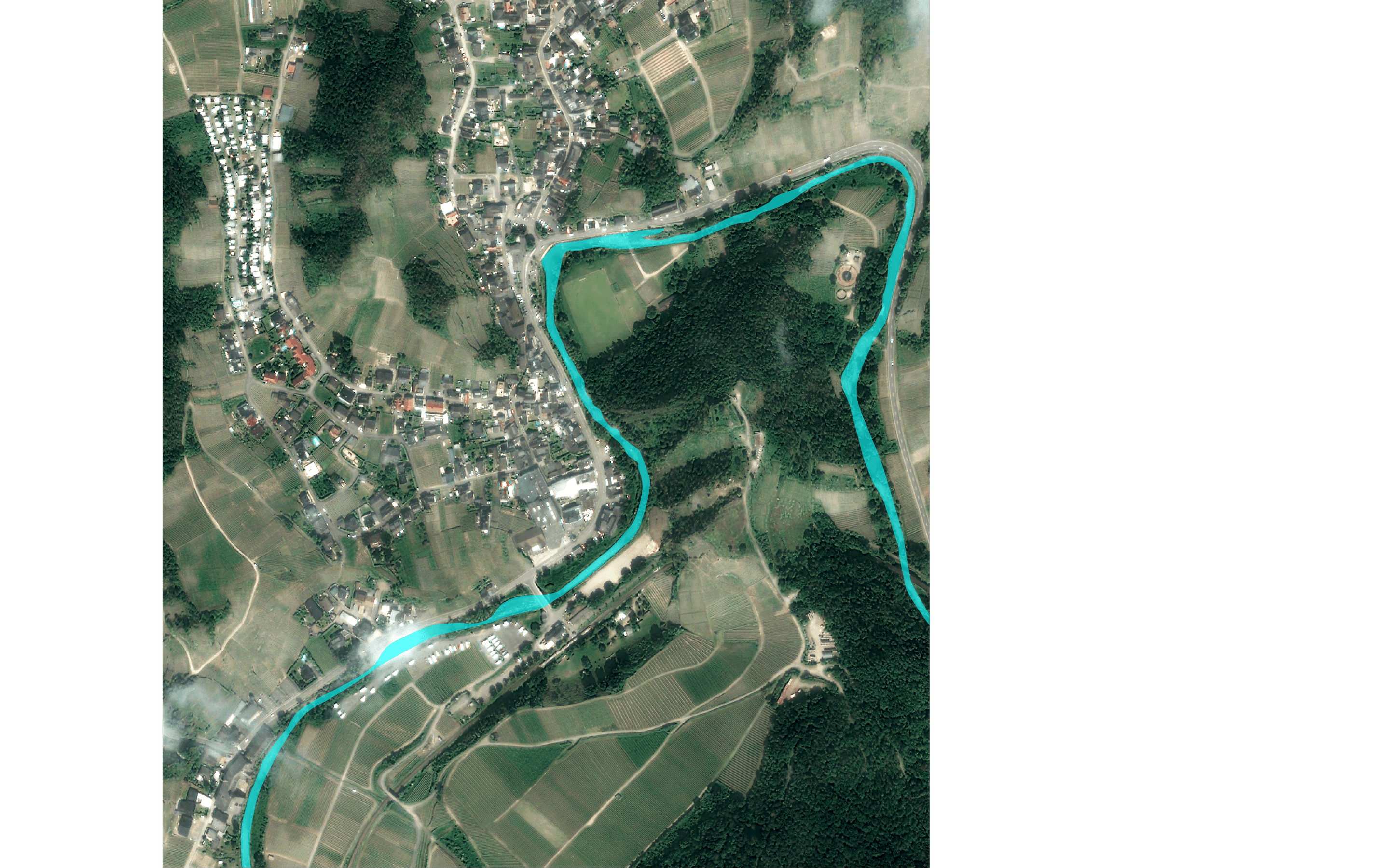


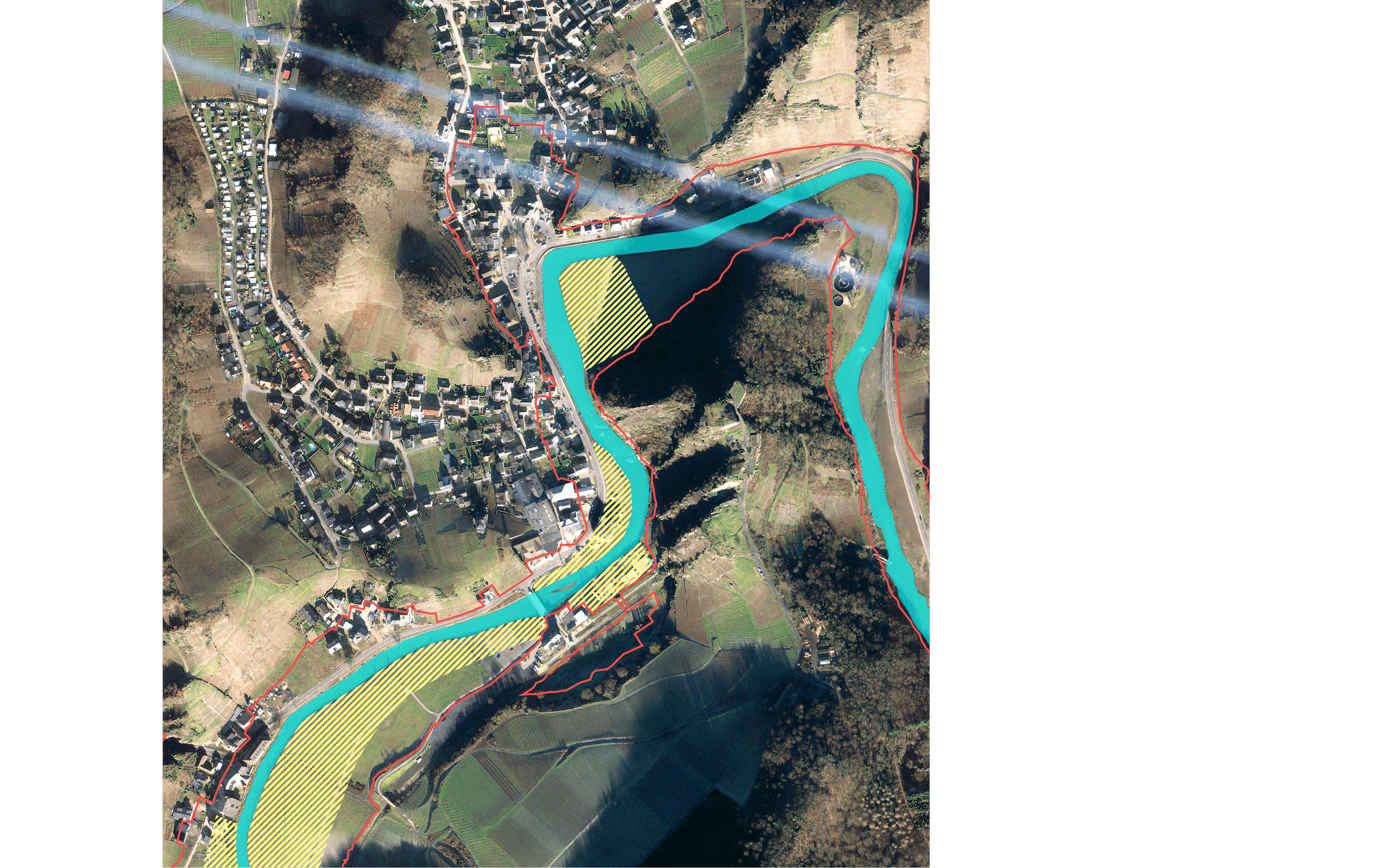
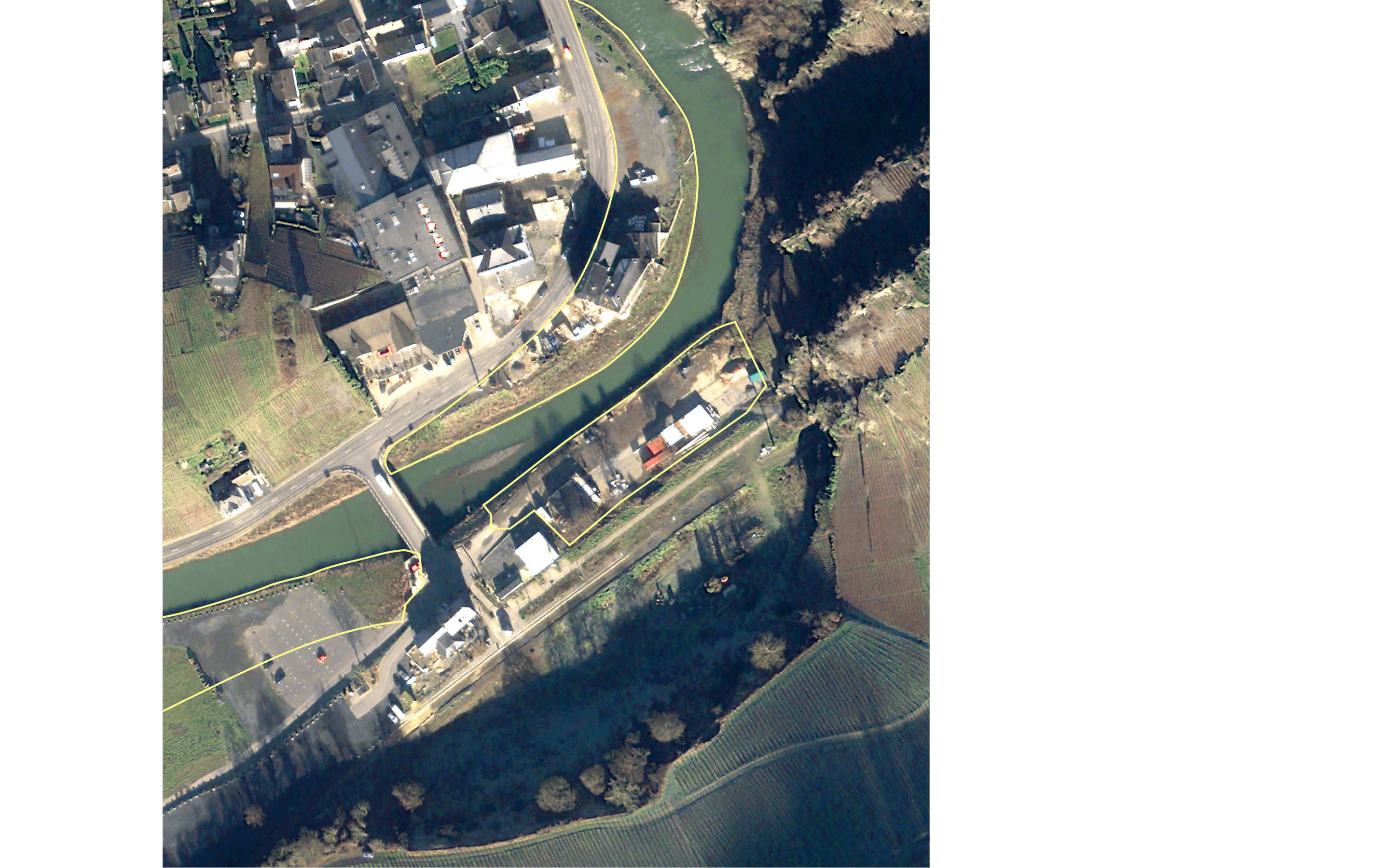
The situation is similar in Altenahr, a few kilometers upstream.


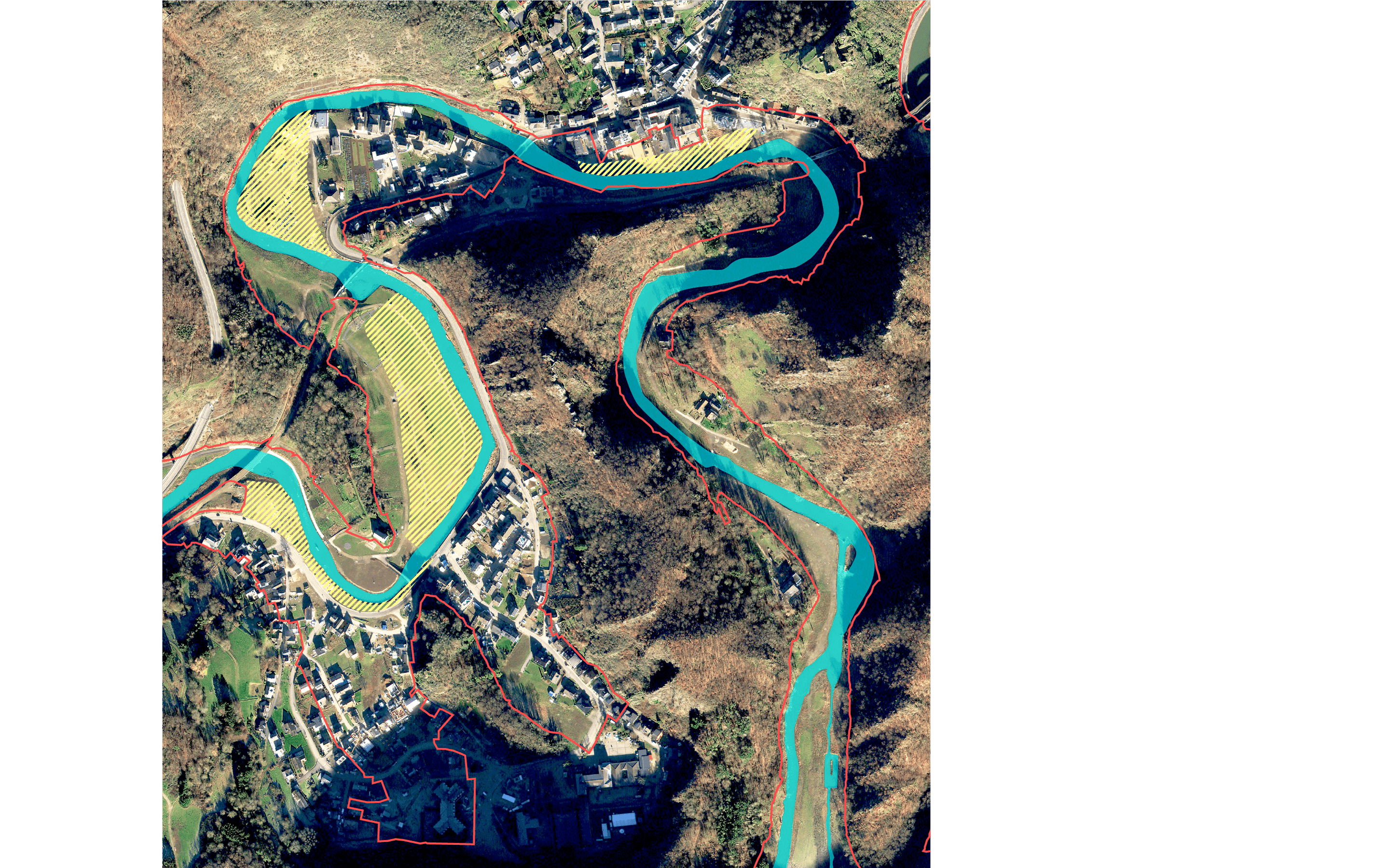
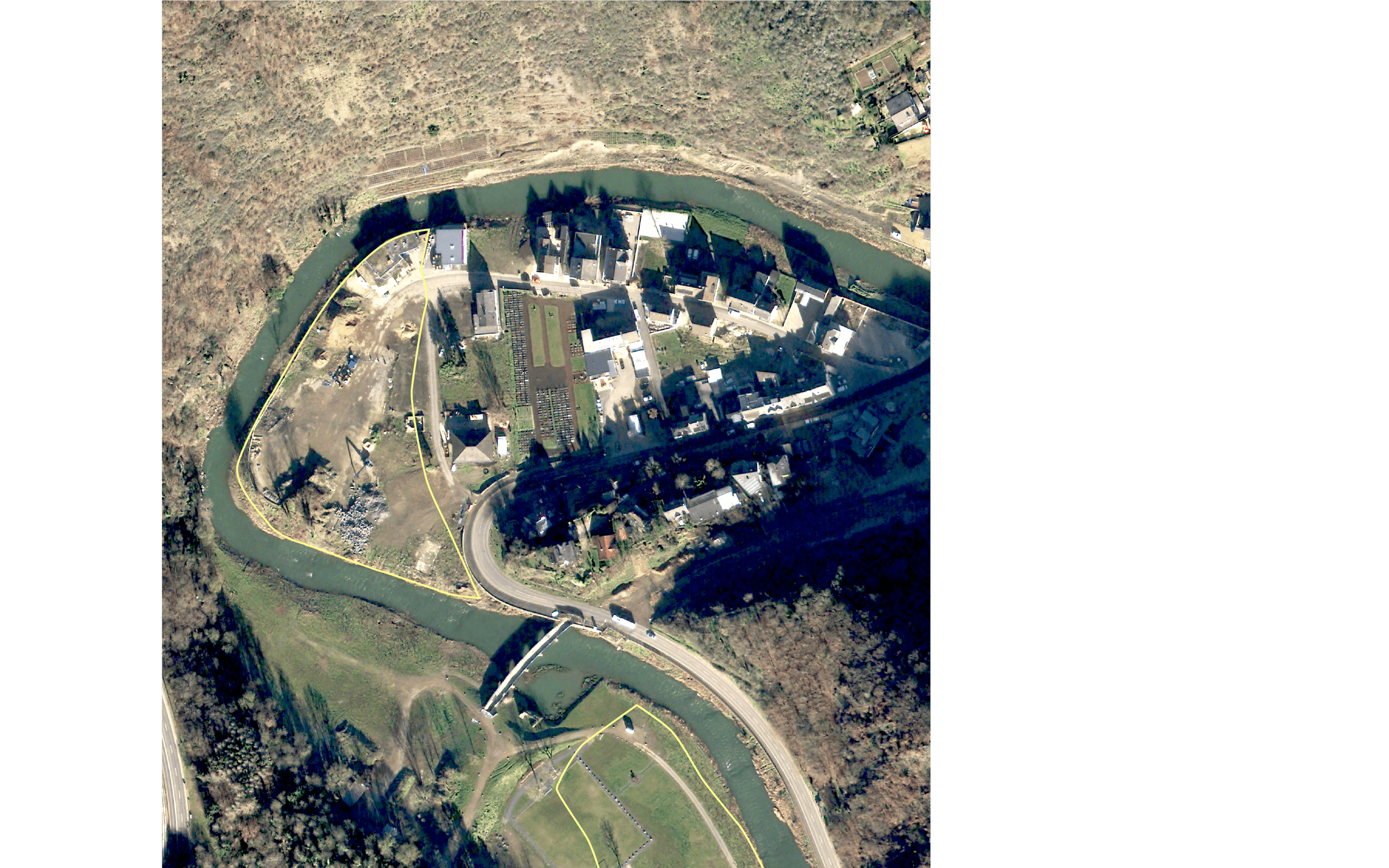
From a flood protection perspective, building development is not only problematic in the danger zone. According to the Federal Water Resources Act, "the construction or extension of buildings" is prohibited anywhere in the designated flood zone. Exceptions are only possible under strict conditions, for example if flood protection is not impaired and flood-resistant construction is carried out.
Extensive use is made of these exceptions. So far, 400 applications for exemptions have been submitted, according to the responsible authority in Rhineland-Palatinate, the Struktur- und Genehmigungsdirektion (SGD) Nord. Of these, 300 applications have been approved and two rejected. According to the authority, documents are still missing for the remaining applications. A spokeswoman explains the low number of rejections with the fact that in many cases, applications were already advised against during preliminary consultations. The authority does not record how often a building project was advised against.
You need to know this: The law only applies to buildings that have to be completely rebuilt anyway. Houses that were only damaged by the flood are protected and can be renovated again without any conditions, as long as they are rebuilt exactly as they were before. Experts estimate that this accounts for the majority of the 9,000 houses damaged in the Ahr valley - flood prevention and the new flood plain therefore play practically no role for them.
Many believe that such a flood is unlikely to happen again
A recently published study by the Institute for Spatial Planning and Development Planning at the University of Stuttgart shows just how great the urge to stay in the valley is. The researchers asked more than 500 households affected by the floods about their attitude towards flood protection, which revealed a certain ambivalence. The majority of respondents were not even aware that they lived in a flood-prone area before the flood disaster in 2021, the researchers report - even though the last flood was only five years ago.
Today, on the one hand, "many respondents consider the withdrawal of settlements and the relocation of critical infrastructure as important options for reducing risks". On the other hand: "Many are nevertheless rebuilding in the same location." While around a third of tenants can imagine moving or have already taken this step, 88% of homeowners would like to stay put. Understandably, the main reason given for this is that they are rooted in the region, but this is immediately followed in second place by the statement that such an extreme flood is very unlikely to happen again and that a move is therefore unnecessary.
Wolfgang Büchs often encounters such attitudes when he is out and about in the region. The biologist has been researching the Middle Ahr Valley since the 1980s and has published a three-volume monograph on the region. Basically, according to Büchs, a construction moratorium was needed after the flood. Clear away the debris, repair the immediate damage, of course. But then first plan how and where to rebuild, where space could be created for flood retention. Something like that takes time. "But that clashes with the residents' understandable desire for normality. And this dilemma is actually insoluble." As a result, most of the structure is now being built in the same way as before, and the Ahr is even narrower in places, says Büchs. "You could say that so far, everything is being done to prepare the ground for the next flood."
Just a few days ago, Büchs visited the Ahr valley to see the possible effects of the "water restoration concept" recently presented by the Ahrweiler district administration. Büchs found some good ideas in the plan drawn up by five engineering firms, such as the fact that some riverbank strips are to be widened. Or driftwood rakes that divert tree trunks and other dangerous driftwood in the event of flooding so that it does not get stuck on bridges and houses again, "an emergency exit door for driftwood, so to speak". Or that a section between Lohrsdorf and Bad Bodendorf should be placed under nature protection.
The problem is that these measures are mostly "minor repairs", as Büchs puts it, on the river itself. In order to better protect people from floods, however, it is necessary to start much earlier: in the source regions of the tributaries, such as the agricultural and forestry areas above the valley. There, Büchs observes clear-cutting of spruce crops, or that grassland soils are compacted by heavy machinery.
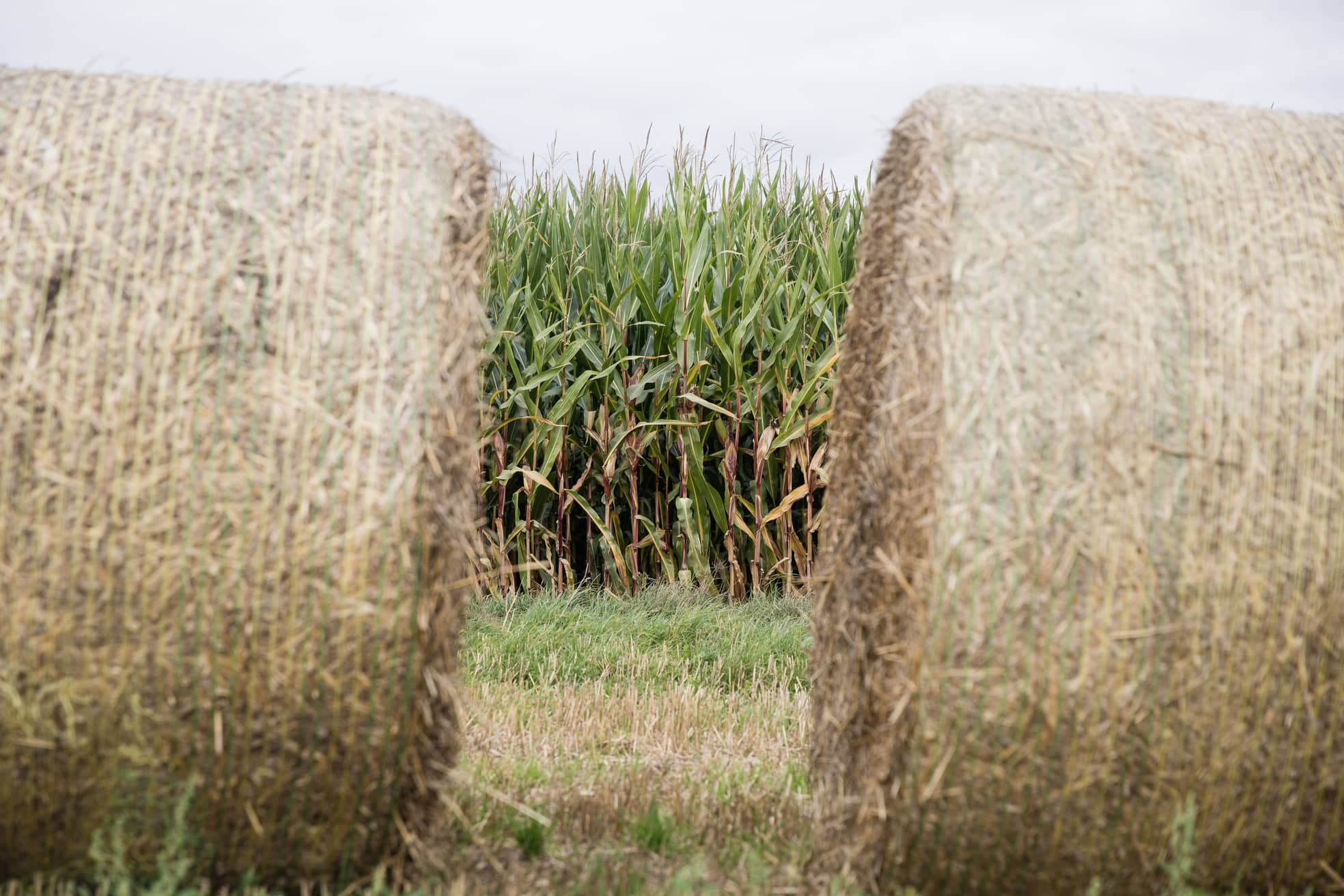
And that areas for maize cultivation are spreading further and further, with the maize plants neatly arranged in rows. "These row crops are particularly susceptible to erosion and runoff towards the Ahr," says Büchs. If heavy rain hits the region again, everything flows towards the river instead of seeping away. The aim should be to keep the water on the high plateaus. Once it has reached the valleys, "then it's basically too late".
Büchs can also list a number of undesirable developments in the valley itself. A building area in the Heppingen district of Bad Neuenahr-Ahrweiler was already problematic according to the older flood maps, as it was located below the crest of a 100-year flood. It is being repopulated. The Ahrstadion in the same town is now equipped with artificial turf. Artificial turf is problematic from an ecological point of view anyway, because it releases a lot of microplastics into the environment and becomes a carpet of waste after use. However, if such mats are washed away during a flood, the risks may increase. They could get caught on bridges and dam up the water. And, of course, water cannot seep into artificial turf.
Translated with DeepL.com (free version)

"You wonder," says Büchs. He says this a total of three times during the interview.
Büchs is also surprised that numerous new embankments have been created along the Ahr, huge mounds of earth where, for example, building rubble was buried two years ago. As important as it was to clean up after the disaster, these piles of rubble are now once again narrowing the river.
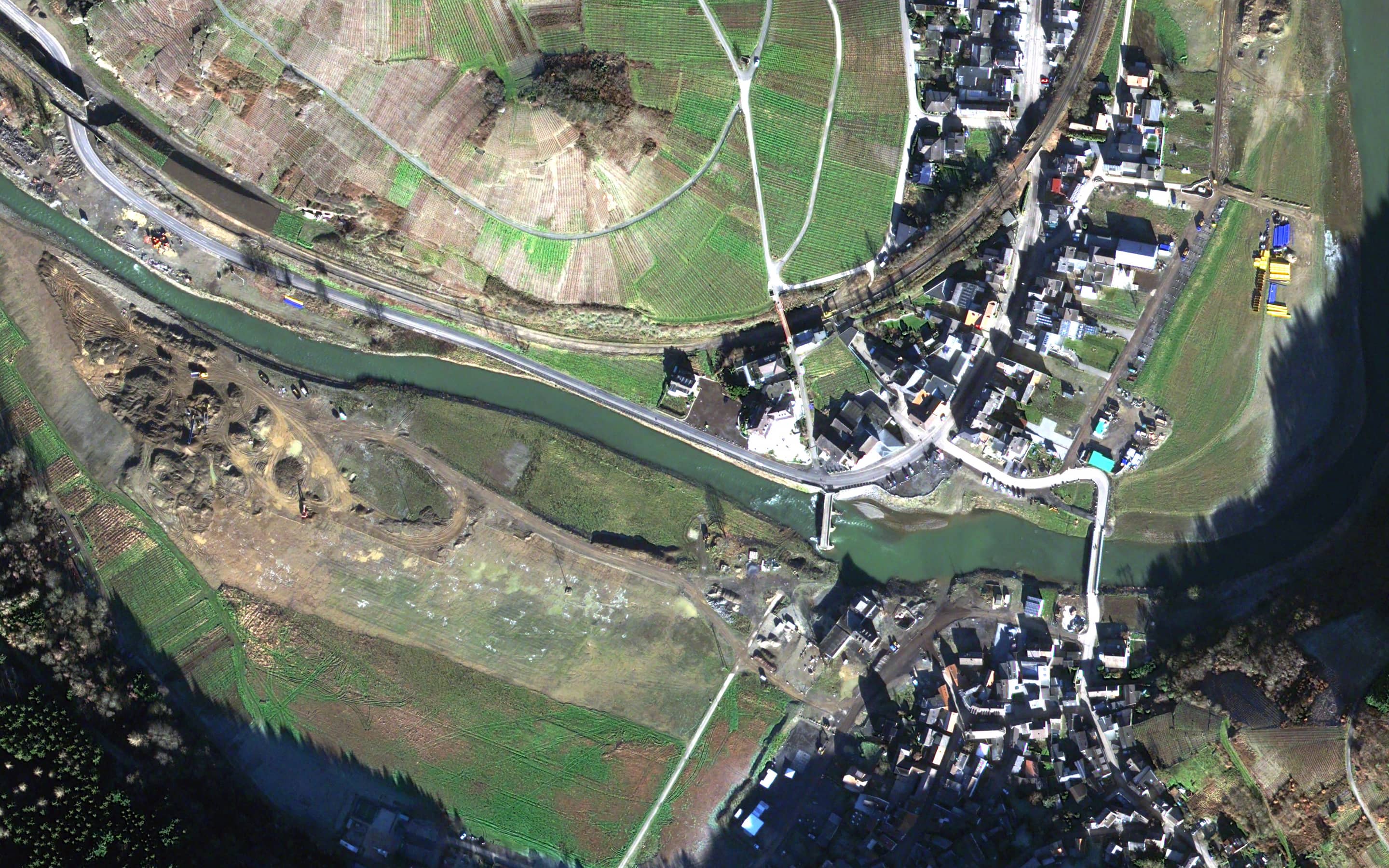

Then there is the Nepomuk Bridge in the village, 300 years old. Gerhard Schreier, the first alderman in Rech, is looking at it right now. On the night of the flood, dead wood and flotsam had accumulated - as on all bridges in the valley - and the water shot into the village instead. But as soon as the mud had dried, a dispute broke out in the village: should the Nepomuk Bridge be rebuilt - or should it be demolished and rebuilt?
The SGD Nord had classified the bridge as at risk of collapse and the local council decided to demolish it in December 2022. Then came the monument conservationists. The German Foundation for Monument Protection called for the bridge to be preserved and for expert reports to investigate whether bats live there. They don't. And so the question here in Rech was: How much adaptation is necessary? And how do the people in the valley want to live?

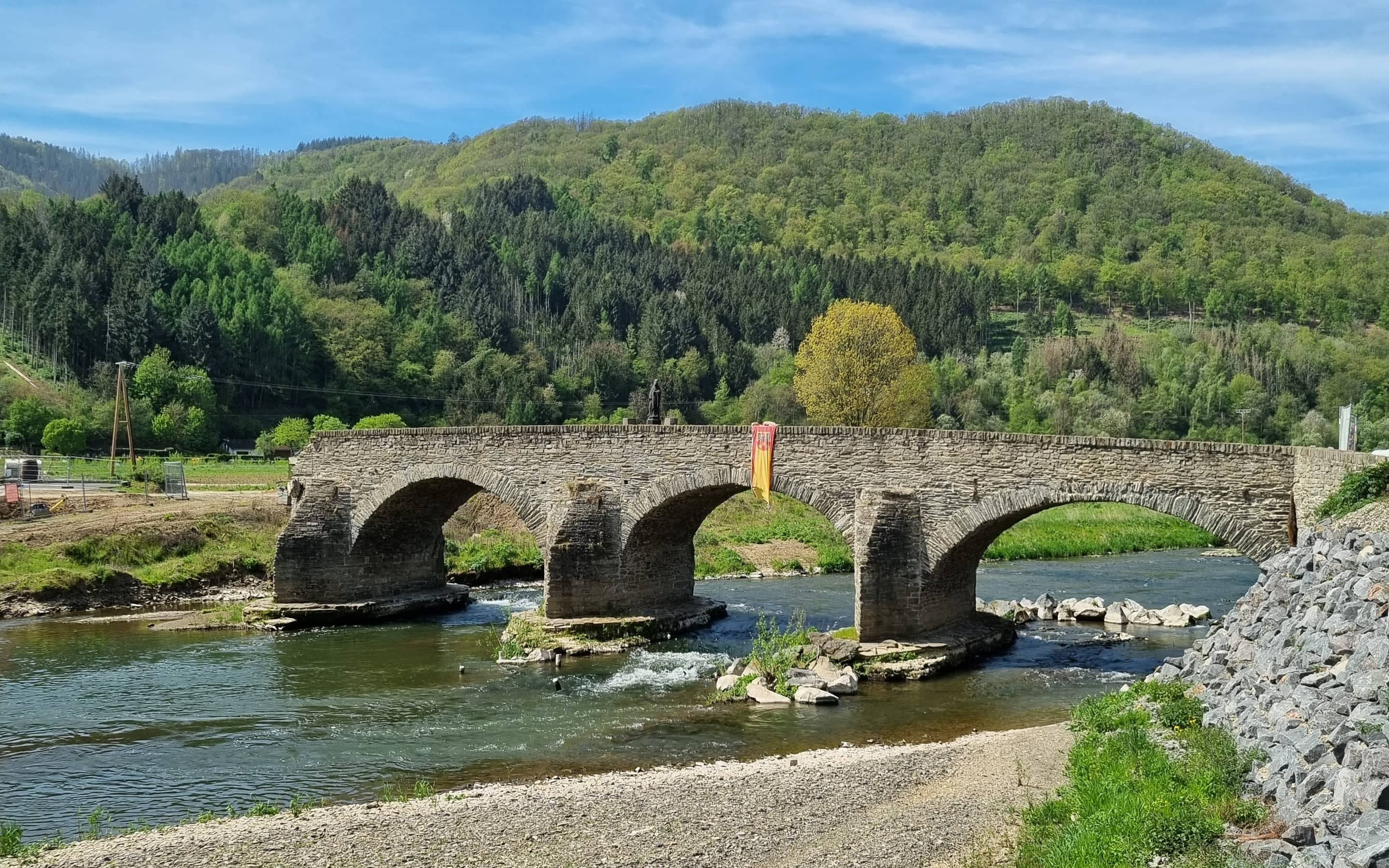
"Some of it is also a feeling." And of course, everyone in the region can only regret the loss of the bridge, but: 250 cubic meters of water can flow under the bridge every second, 450 cubic meters are required. "We have to see the necessity."
He himself has lost nothing at night, his house is far enough away from the riverbank. But right next to the bridge, on the other bank, the Ahr has torn away 21 houses, garages and sheds. While they are not allowed to be rebuilt, some people want to hold on to the bridge of all things? Schreier has never understood this and has not only made friends. There was a dispute in the village for weeks.
Now the decision has been made to demolish the bridge. They are building a new bridge, and even if it is not yet clear exactly when - Gerhard Schreier is certain that it is for the good of the village. And he is sure that the Nepomuk statue will also find a place in the new bridge. A safe one.
